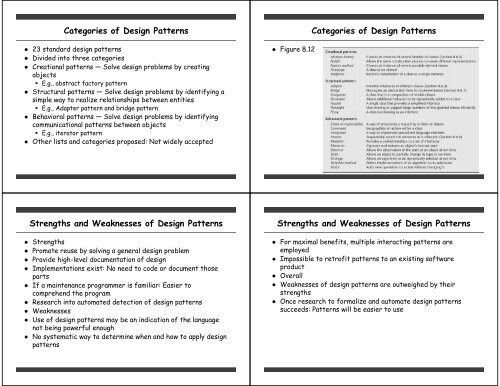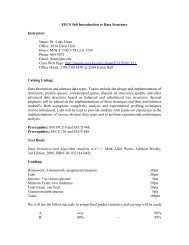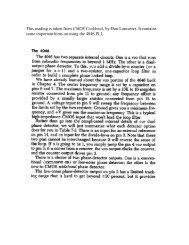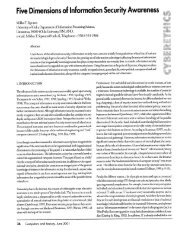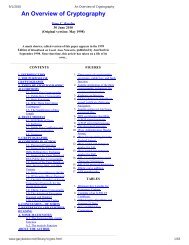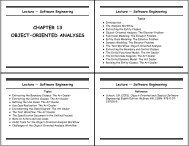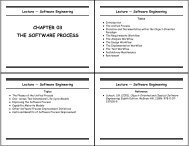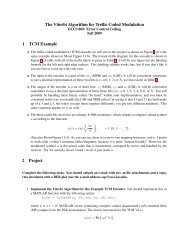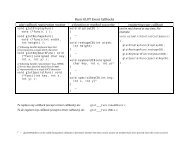CHAPTER 08 REUSABILITY AND PORTABILITY
CHAPTER 08 REUSABILITY AND PORTABILITY
CHAPTER 08 REUSABILITY AND PORTABILITY
You also want an ePaper? Increase the reach of your titles
YUMPU automatically turns print PDFs into web optimized ePapers that Google loves.
Categories of Design Patterns● 23 standard design patterns● Divided into three categories● Creational patterns — Solve design problems by creatingobjects• E.g., abstract factory pattern● Structural patterns — Solve design problems by identifying asimple way to realize relationships between entities• E.g., Adapter pattern and bridge pattern● Behavioral patterns — Solve design problems by identifyingcommunicational patterns between objects• E.g., iterator pattern● Other lists and categories proposed: Not widely accepted● Figure 8.12Categories of Design PatternsStrengths and Weaknesses of Design Patterns● Strengths● Promote reuse by solving a general design problem● Provide high-level documentation of design● Implementations exist: No need to code or document thoseparts● If a maintenance programmer is familiar: Easier tocomprehend the program● Research into automated detection of design patterns● Weaknesses● Use of design patterns may be an indication of the languagenot being powerful enough● No systematic way to determine when and how to apply designpatternsStrengths and Weaknesses of Design Patterns● For maximal benefits, multiple interacting patterns areemployed● Impossible to retrofit patterns to an existing softwareproduct● Overall● Weaknesses of design patterns are outweighed by theirstrengths● Once research to formalize and automate design patternssucceeds: Patterns will be easier to use


